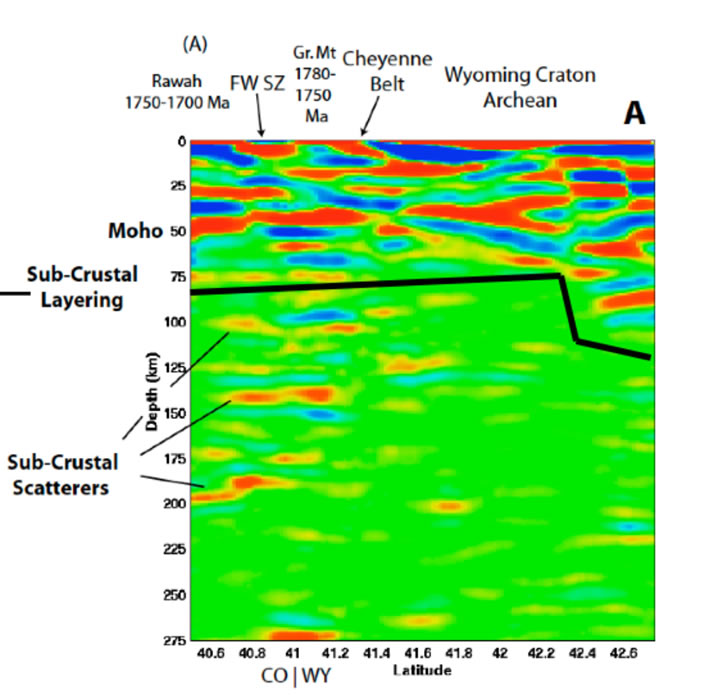
| Intro | Seismology | Heat flow | Gravity | Conclusions | References |
| Low velocity zone | Traditional techniques | ||||
| Mantle stratification (via receiver functions) | Admittance | ||||
| Coherence |
Seismology: Mantle stratification interrogated by receiver functions
Traditional receiver function studies that image impedance contrasts in the subsurface may intuitively seem to be a logical method to determine the depth of the lithosphere-asthenosphere boundary (LAB). Unfortunately, the P to S conversion from depths representative of the LAB (~50 to 250 km) arrives at the same time as crustal reverberations and other information in the P wave coda. This high noise amplitude is further compare to the perhaps minor impedance contrast across the diffuse LAB characteristic of cratonal keels.
S to P receiver functions may in the future provide better information, as the S to P conversion arrives shortly before the S wave in a relatively quiet time window of the seismogram. Thus far, however, results from S to P studies have not been widely accepted in the literature.
Alternatively, P to S conversions at depth may be used to image aspects of lithospheric architecture other than depth to the LAB. Zurek and Dueker (2004) examined receiver functions in a south to north transect from the Colorado Rocky Mountains into the Wyoming Craton. The authors observed P to S conversions at depths greater than 125 km underneath the craton. Furthermore, they note an increase in the depth of these converters north from the Cheyenne Belt, indicative of thicker lithosphere beneath the central Wyoming Craton than its southern part (See figure below, from [Zurek and Dueker, 2005]).
